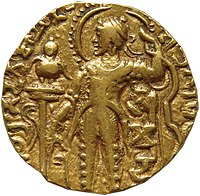OLD COINS OF INDIA
Coins Collection Gallery is a place where you can find information such as coins of different countries, the value, tips and trick, etc.
Coinage of India, issued by Imperial dynasties and smaller middle kingdoms of India began during the 1st millennium BC, and consisted mainly of copper and silver coins in its initial stage.Scholars remain divided over the origins of Indian coinage. What is known, however, is that metal currency was minted in India well before the Mauryan empire (322–185 BC),and as radio carbon dating indicates, before the 5th century BC.
The tradition of Indian coinage was further enriched by the coming of Islam. The East India Company introduced uniform coinage in the 19th century, and these coins were later imitated by the modern nation states of Republic of India, Pakistan, Sri Lanka, and Bangladesh. Numismatics plays a valuable role in determining certain period of Indian history.
Post Maha Janapadas period (400 BC—200 AD)
Early coins of India (400 BC—100 A.D.) were made of silver and copper, and bore animal and plant symbols on them. Coinage of Indo-Greek kingdom began to increasing influence coins from other regions of India by the 1st century BCE. By this time a large number of tribes, dynasties and kingdoms began issuing their coins; Prākrit legends began to appear. The Mauryan coins were punch marked with the royal standard to ascertain their authenticity. The Arthashastra, written by Kautilya, mentions minting of coins but also indicates that the violation of the Imperial Maurya standards by private enterprises may have been an offense. Kautilya also seemed to advocate a theory of bimetallism for coinage, which involved the use of two metals, copper and silver, under one government.Early Common Era—Middle Ages (200 AD—1300 AD)
Allan & Stern (2008) report on Indian coinage of the Middle Ages:
| A notable adaptation of a Hun design was the neat silver coinage of the Shahis of Gandhara of the "bull and horseman" type in the 9th and 10th centuries, extensively imitated by the Muslim conquerors of India and the contemporary minor Hindu dynasties. The other type favoured by the medieval Hindu dynasties for their gold coinage was that of a seated goddess—going back to a Gupta reverse—and an inscription with the king's name on the other side. |








No comments:
Post a Comment